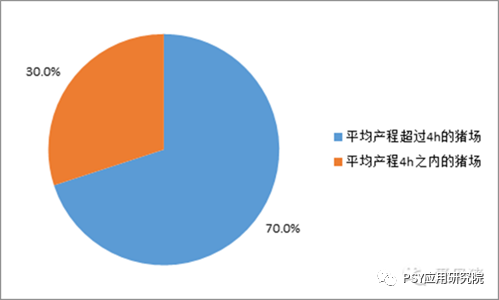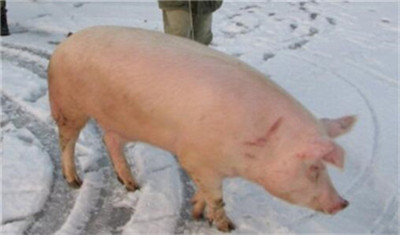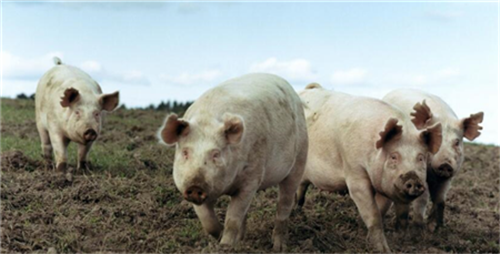How do we lose the productivity of sows step by step
To maintain normal delivery, you need enough productivity. Naturally, sows are productive enough. How can there be insufficient productivity in factory intensive pig farms?. Through the front-line investigation and research, it is found that the sow delivery productivity is unconsciously lost step by step by the pig farm manager!
Let's first take a look at the anatomical structure of the birth canal of sows.
From the anatomical structure, it is difficult for sows to have dystocia, and according to pig disease statistics, the dystocia rate of sows is about 3%. However, according to the survey of 1356 large-scale pig farms investigated by PSY Applied Research Institute, the incidence of dystocia in sows (real dystocia and long labor, hereinafter collectively referred to as dystocia) reached 70%!

Then, we need to think about a question: under natural circumstances, it is very difficult for sows to have dystocia and the process of labor is too long. Why is the proportion of dystocia and prolonged labor of artificially raised sows so high?
First of all, we need to understand what is commonly called the cause of dystocia. Let's take a look at the statistics of swine disease.
Let's go on to analyze how the productivity of childbirth is formed and where does it come from?
The author believes that the yield is composed of five parts, as shown below.
Next, let's take a look at how the pig farms with a high proportion of dystocia lose the productivity of sows step by step.
The first is uterine contraction.
This is the main force that constitutes productivity, which is not self-controlled and is dominated by the hormone endogenous oxytocin.
All the factors that affect the secretion of endogenous oxytocin will weaken the exertion of uterine contraction. Endogenous oxytocin is a kind of neurohormone secreted by the posterior lobe of the pituitary gland. Do not think that it is secreted by the uterus. The factors that stimulate the secretion of endogenous oxytocin include stimulation from the cervix and vagina, as well as stimulation from breast-feeding and sexually sensitive areas during mating, and reflexes cause secretion from the posterior pituitary in the brain.
The reason why the author repeatedly emphasizes endogenous oxytocin is that there is a difference in the mode of action between endogenous oxytocin and exogenous oxytocin. Endogenous oxytocin causes "contractions (rhythmic peristaltic contractions)" during delivery-triggers piglets'"clamping force-fetal force", while exogenous (high-dose) oxytocin causes spasmodic contractions during delivery-causing piglets to "suffocate".
For example--
★ temperature is too high:
The suitable temperature range of sows is 16-22 ℃, and the heat stress temperature of adult sows is 26.5 ℃. Heat stress inhibits oxytocin secretion. The summer temperature in most areas of China is higher than 26.5 ℃. From the point of view of economy and cold fear of piglets, the temperature of delivery room should be controlled at 22 ~ 25 ℃.
Over-management of ★:
The pig farm puts too much emphasis on humanized management and "treats sows like wives". You know, sows do not need human companionship during childbirth, they need a quiet environment, so people wearing around in front of sows will make sows feel urgent and produce a lot of epinephrine. the release of oxytocin is inhibited by epinephrine.
★ light is too strong:
60% to 75% of sows give birth at night (Bichard et al. 1976). The current delivery room environment, brightly lit, is completely people-oriented rather than pig-oriented, for the convenience of artificial midwifery. Of course, during the lactation period after delivery, the light should not be too dim, which requires managers to make adaptive adjustments.
The maternal nature of ★ is too weak:
Artificially take away the nature of the sow to make a nest. Cronin et al. (1993) covered the delivery room of young sows with sawdust to reduce the mortality of piglets during delivery (10.5 live piglets: 10.0) and the incidence of sows trampling piglets within 6 hours after delivery (2% 21%). The supply of sawdust can stimulate the vitality of parturient sows before delivery and promote the cultivation of delivery process and maternal behavior.
The second is hard work.
During delivery, the abdominal muscles and buttocks muscles strongly contract, resulting in increased abdominal pressure, squeezing the fetus in the womb to promote fetal delivery, which is called hard work.
The third is fetal strength.
Endogenous oxytocin causes paroxysmal contraction of the uterus from the cervix. During contraction, piglets are squeezed by the uterus, which will lead to temporary suffocation and hypoxia, which will reflexively cause instinctive "struggle". It is what the author calls the third kind of delivery force-fetal force.
The fourth is sheep water power.
Amniotic fluid is formed in the early stage of pregnancy in sows and comes from the blood of sows and fetal plasma. Under normal circumstances, sows begin to give birth a few minutes after breaking amniotic fluid, and the amount of amniotic fluid also determines the length of the sow's labor process.
The fifth is sucking power.
Sow nipples have a large number of sensitive receptors, and stimulation can make sows reflex and secrete oxytocin. Therefore, whether it is delivery or lactation is a physiological activity that needs to be completed by sows and piglets. Allowing the first-born piglets to suck the sows' nipples in time during delivery can stimulate the sows to produce endogenous oxytocin to help the piglets born as soon as possible.
In particular, postpartum reserve sows can be shown as unwilling to breast-feed and bite piglets, mainly because maternal training such as nests is not enough.
Measures to improve the willingness of sows to take the initiative to milk:
★ infusion-supplementation of energy, calcium and potassium in drinking water to relieve fatigue and correct metabolic acidosis in sows
★ curettage of the uterus-through the local use of Gongyanjing in the uterus to thoroughly clear the uterus, strong analgesia, detumescence and hemostasis, anti-inflammation and muscle production, etc.
★ anti-inflammation-through intramuscular injection of anti-inflammation, infusion anti-inflammation and local anti-inflammation of the uterus, to prevent postpartum infection and mastitis in sows.
After the enhancement of postpartum comfort and the recovery of physical strength and appetite of sows, the willingness of natural active lactation will be greatly enhanced, which can effectively promote sow lactation.
To sum up, it is suggested that there are three states of raising pigs: the first is to raise pigs as pigs, which is very casual and extensive, and of course it is not good to raise pigs; the second is to raise pigs as human beings, which is very fine, with babysitting management, but human pigs are different, sows will have a sense of urgency; the third is to raise pigs as pigs, adapt to pig habits, adapt to pig appetite, pig-based raising pigs, this is the highest state of raising pigs. Only by raising pigs can the productivity of pigs be brought into full play and give birth smoothly.
Related
- On the eggshell is a badge full of pride. British Poultry Egg Market and Consumer observation
- British study: 72% of Britons are willing to buy native eggs raised by insects
- Guidelines for friendly egg production revised the increase of space in chicken sheds can not be forced to change feathers and lay eggs.
- Risk of delay in customs clearance Australia suspends lobster exports to China
- Pig semen-the Vector of virus Transmission (4)
- Pig semen-the Vector of virus Transmission (3)
- Five common causes of difficult control of classical swine fever in clinic and their countermeasures
- Foot-and-mouth disease is the most effective way to prevent it!
- PED is the number one killer of piglets and has to be guarded against in autumn and winter.
- What is "yellow fat pig"? Have you ever heard the pig collector talk about "yellow fat pig"?



